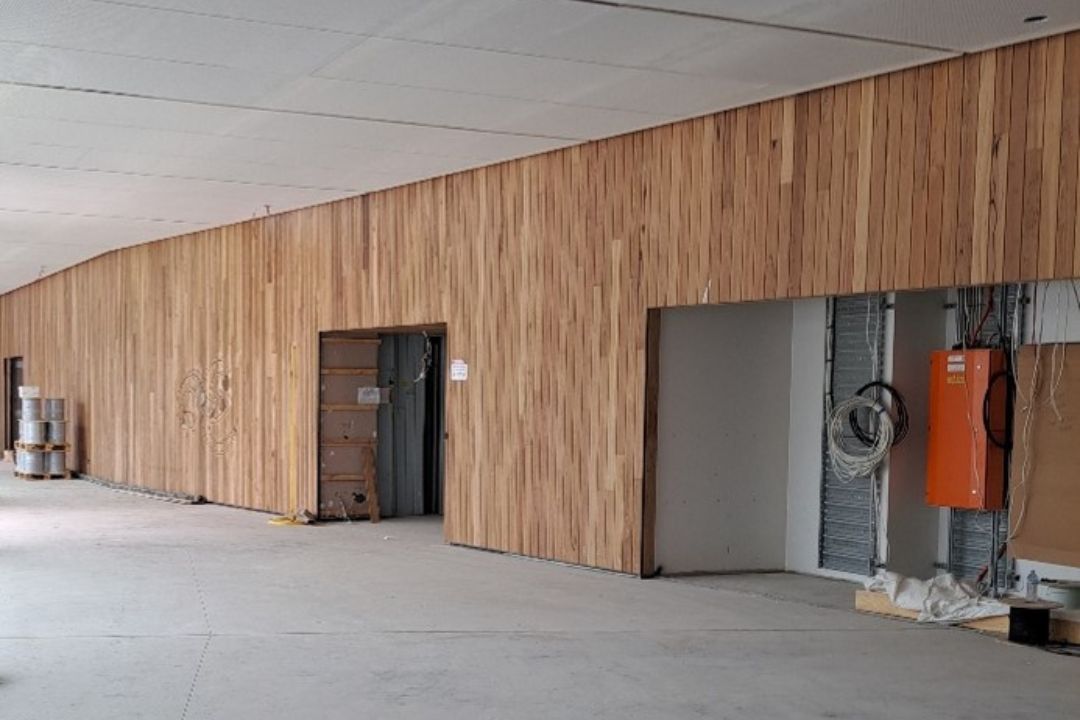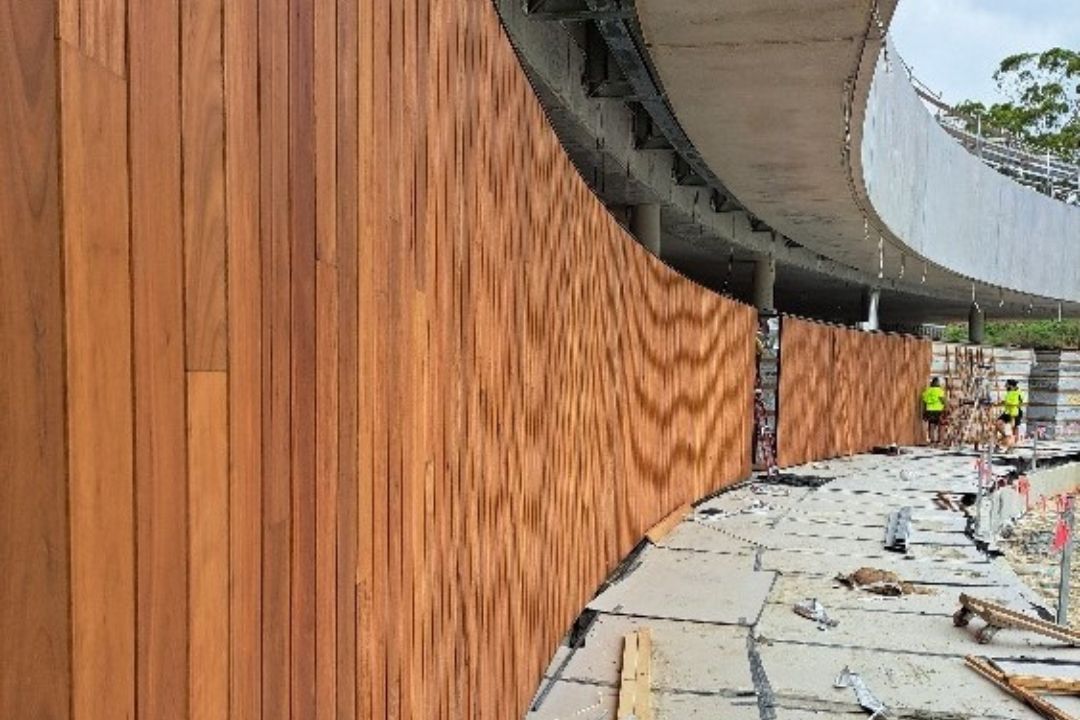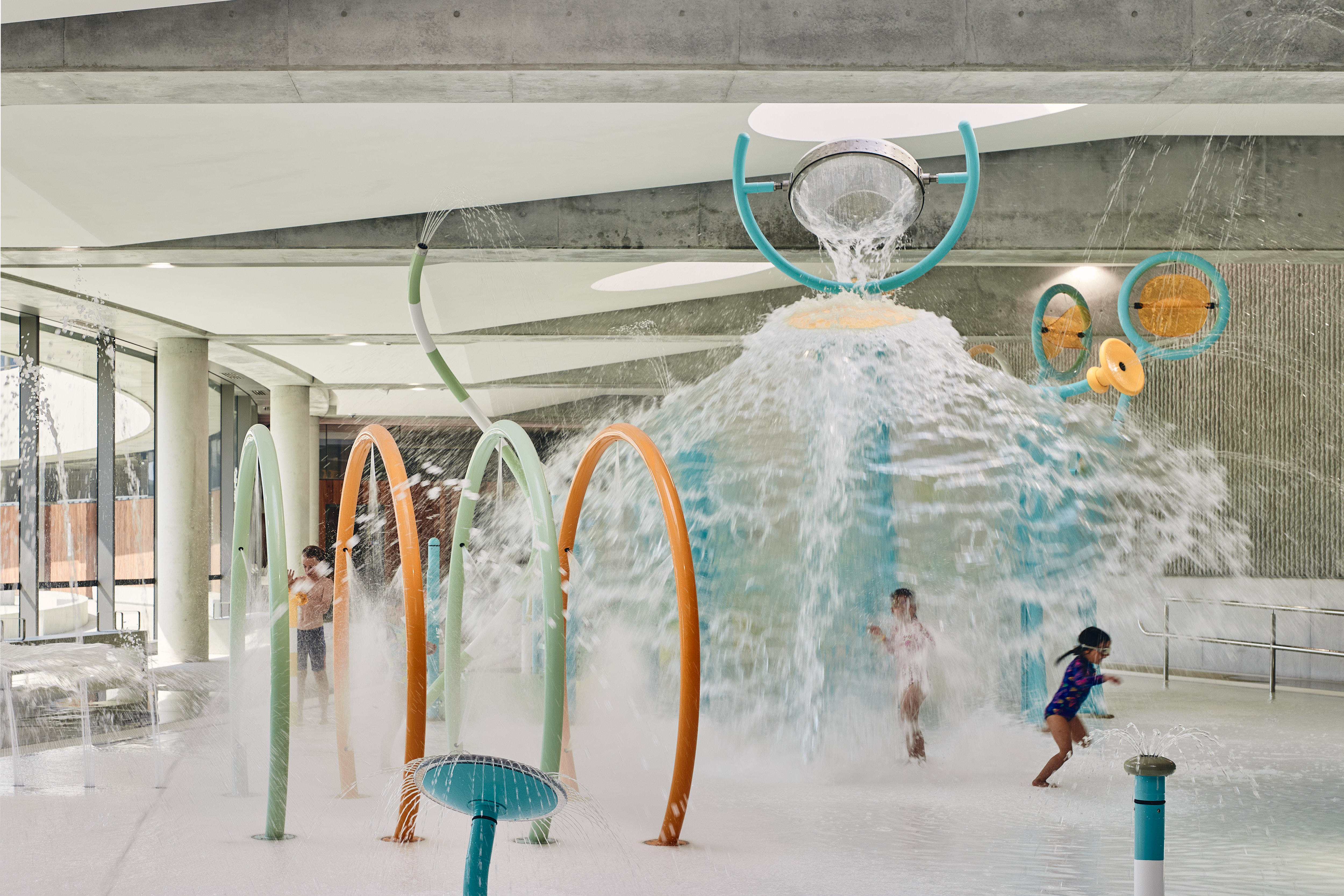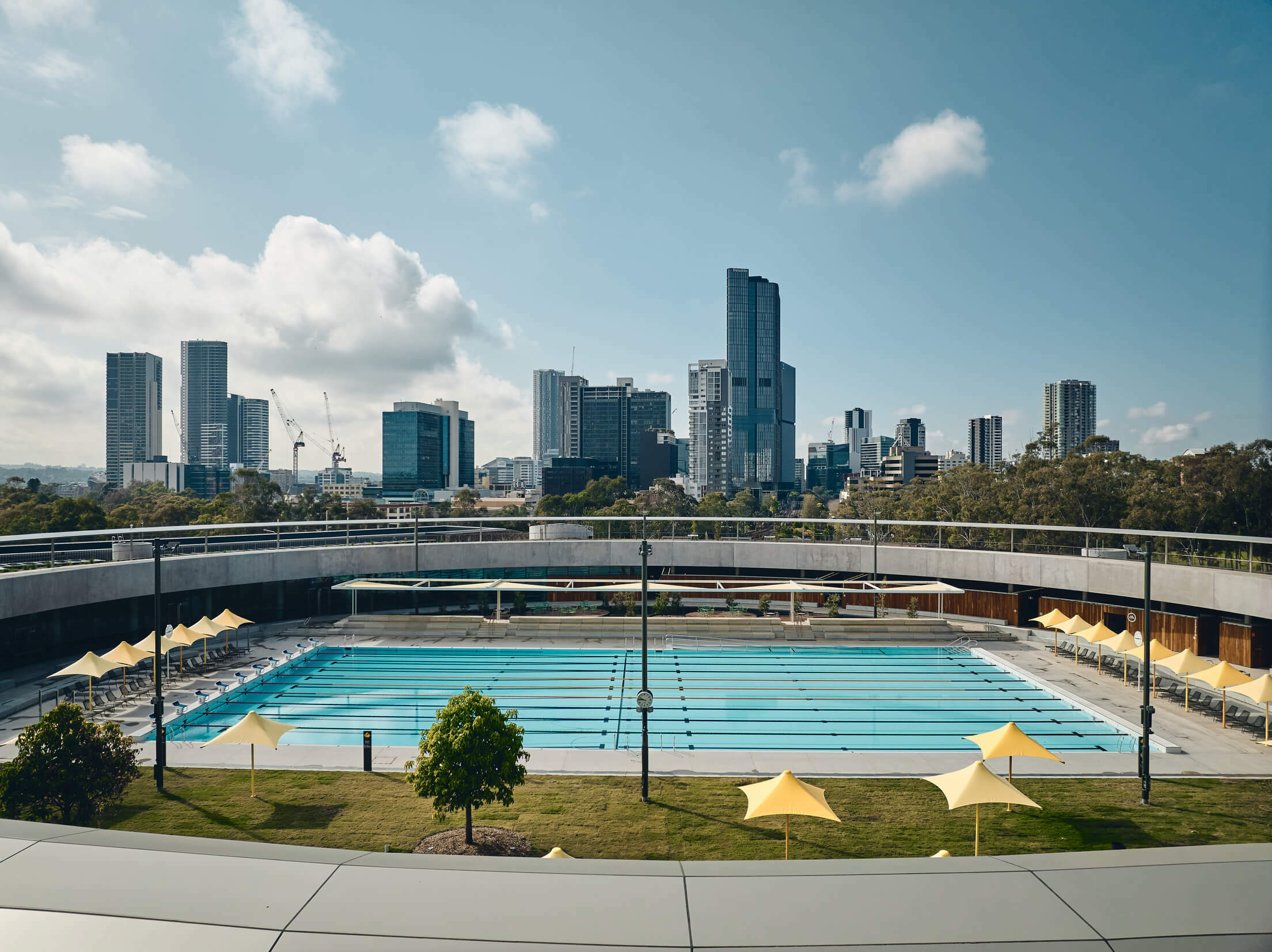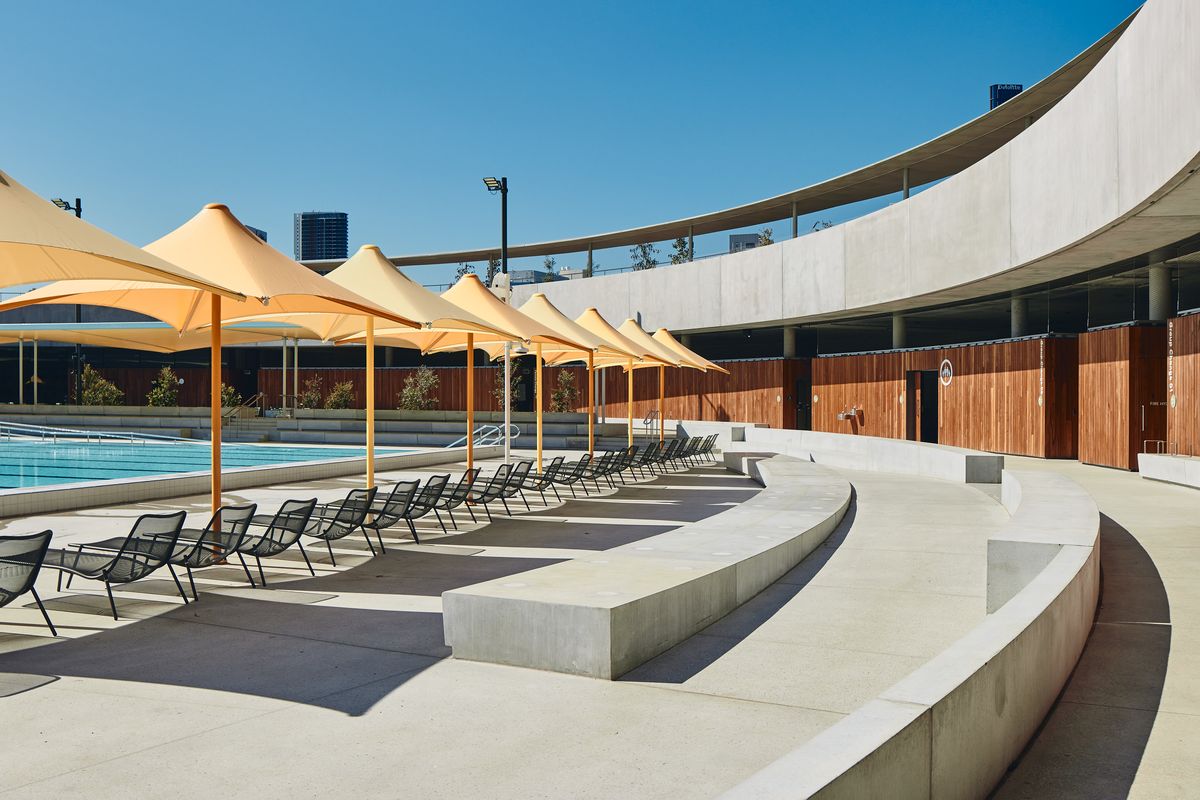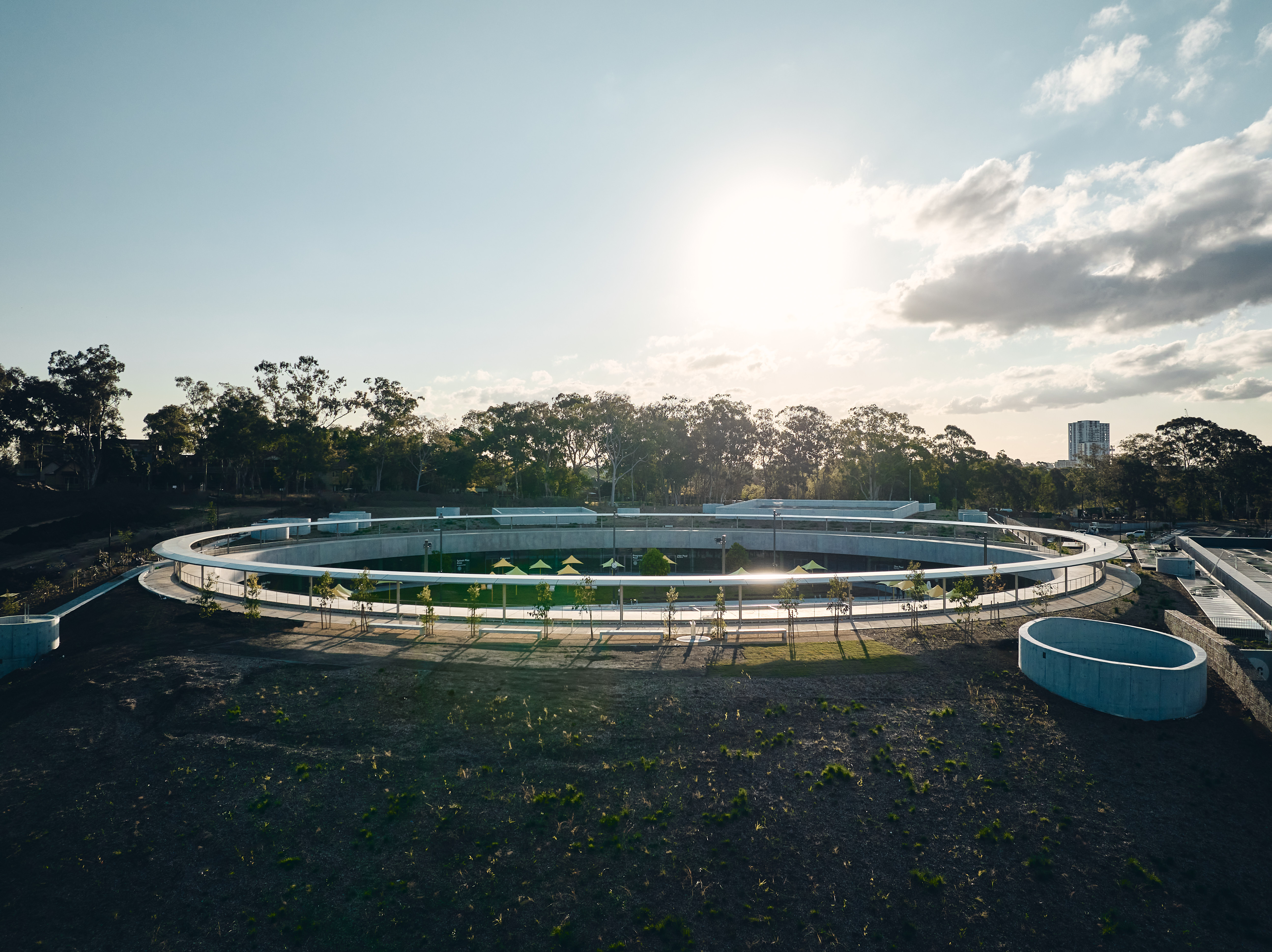
A natural and sustainable design
Aquatic and leisure centres are large consumers of energy. From the equipment to filter, circulate, disinfect and heat water, to maintaining lighting and temperature inside, operating a centre can be costly. It’s important to strike the right balance between energy usage and environmental efficiency.
The Parramatta Aquatic Centre (PAC) has been designed with environmental performance front of mind. From sourcing ecological materials, to water harvesting and alternative energy options, Parramatta’s newest community facility strikes the right balance between having the power to treat and heat water, keep the lights on and maintain a comfortable temperature, and delivering on Council’s sustainability mission to do more and use less.
-
One thing you will notice when visiting the PAC is the vast amount of natural light filtering through the building.
The expansive skylights above the indoor pools and splash play area might look like glass, but are in fact made from a special lightweight material called ETFE (Ethylene tetrafluoroethylene).
ETFE filters a large proportion of infra-red light, which can help improve a building’s energy consumption, and has been used at many public buildings in the form of large-spanning roofs, skylights and facades. It is approximately 1% the weight of glass!
Appearing as transparent windows, they are created by inflating the foil material to form cushions. The light and heat of the sun that filters through the EFTE helps manage the temperature inside the pool halls.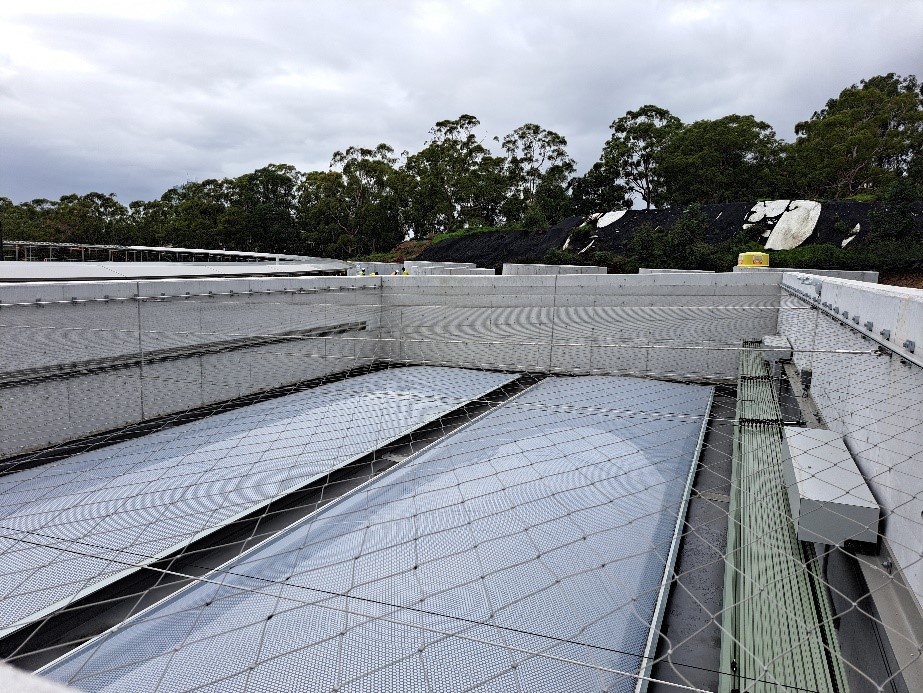
The cushions created by the ETFE also absorb the acoustics in an open space - perfect for an indoor pool hall bustling with families!
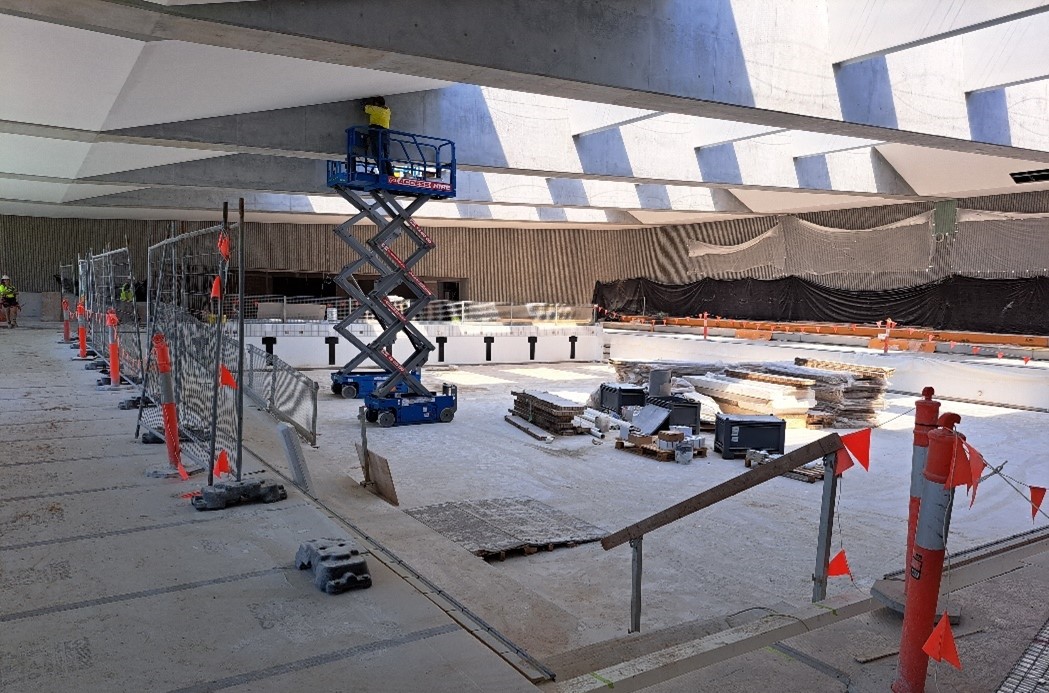
-
Rooftop solar panels are another important addition to the PAC. Due to the demands of a facility the size of the PAC, no major piece of equipment is reliant on the power produced by the solar panels, however the power that the PAC’s 358 solar panels does produce is returned direct to the grid for the benefit of others.
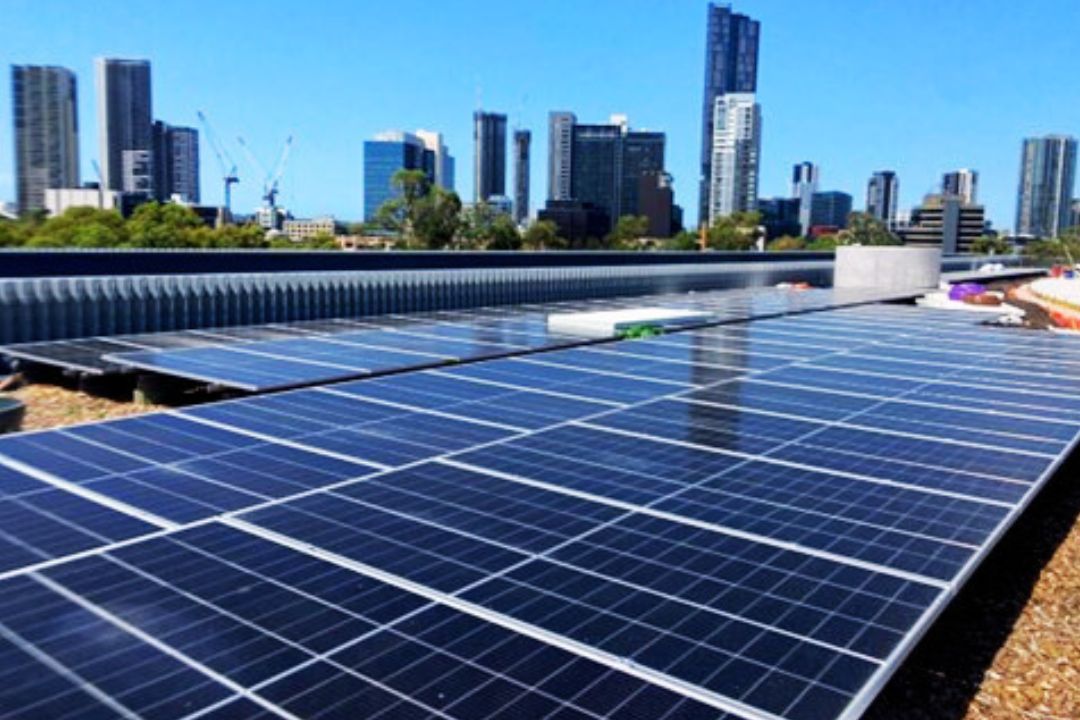
-
The slope and location of the PAC site means stormwater tends to runs off down the land instead of seeping in the ground. To mitigate this, Council has incorporated three luscious rain gardens into the PAC - at the main entrance, behind the covered spectator seating for the 50m outdoor pool, and at the bottom of the site near Pitt Street.
A rain garden is a system that collects water from surrounding hard surfaces, temporarily holds and filters the water back into the ground. Installing rain gardens is important for the health of our waterways. Not only do they filter pollutants from the water, they stop soil erosion and provide a wonderful spot for birds and butterflies. The PAC’s rain gardens will showcase a beautiful range of Australian natives including groundcovers, grasses, climbers, and flowering shrubs in a variety of shapes and colour.
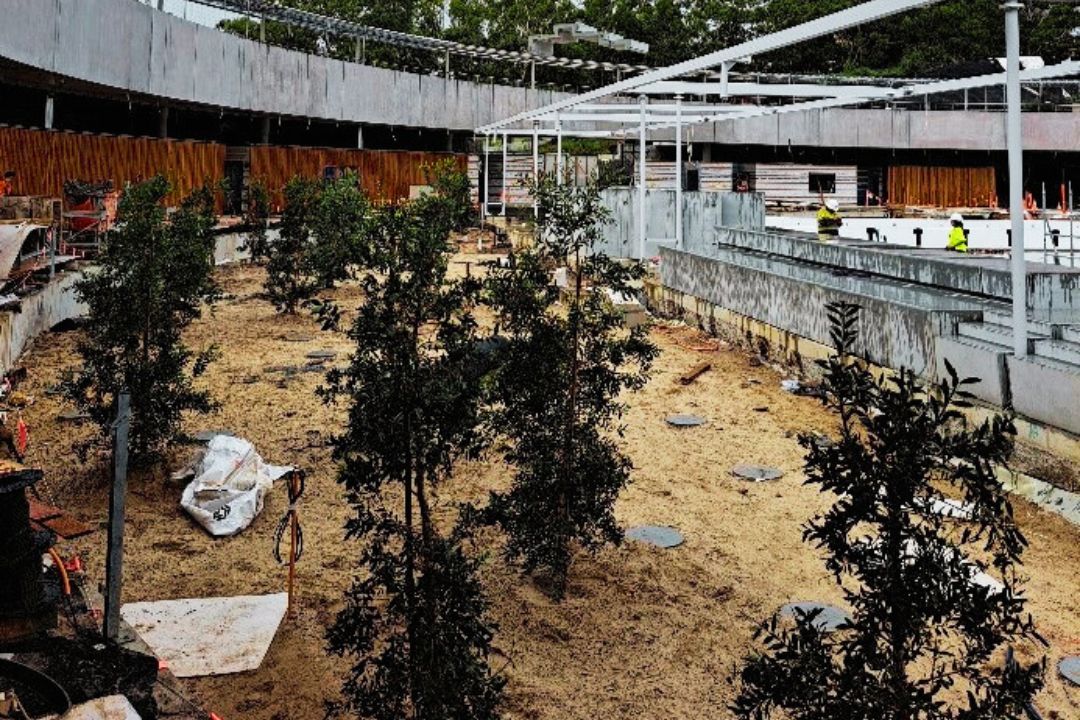
-
Building a new aquatic centre involves selecting and purchasing a lot of new equipment. Essential equipment such as pool filtration, water heating and air conditioning are among the most used in the centre’s operation, so ensuring they are energy efficient is vitally important. At the PAC, an integrated centralised plant, located at the basement of the building, will deliver waste, heat and energy efficiencies.
Other key features that help with the PAC’s environmental performance, and in some cases harness the natural environment, include:
- The exterior of the Health & Wellness Centre is an automated, naturally ventilated façade that reduces dependence on fulltime mechanical air-conditioning.
- Most of the lighting throughout the facility is LED based which is significantly more energy-efficient and reduces consumption.
- Water efficient fixtures and fittings have been used throughout the facility.
- Pool covers will also assist with maintaining the required water temperature of all the pools.
- A 125,000-litre water re-use tank has been installed. It collects rainwater from the roof of the Health & Wellness Centre to supply onsite irrigation and for toilet-flushing.
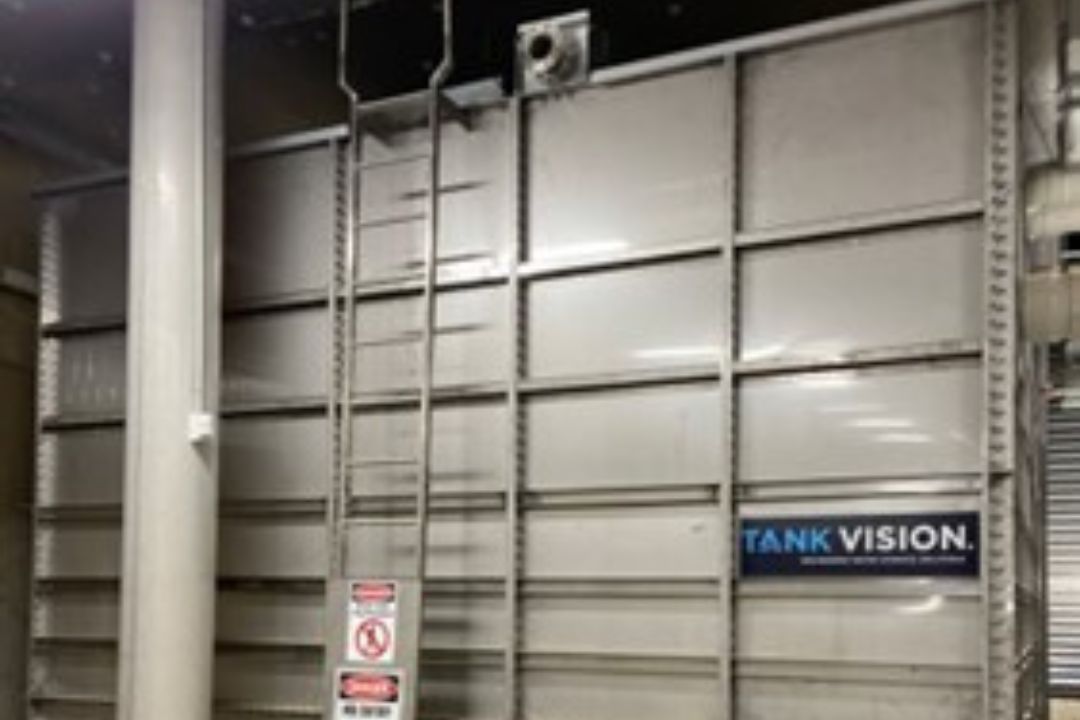
Plus, at least 95% of all timber used at the PAC is Forest Stewardship Council (FSC) certified. This means that the timber used was sustainably harvested from forests managed to the highest environmental, social and economic standards.
